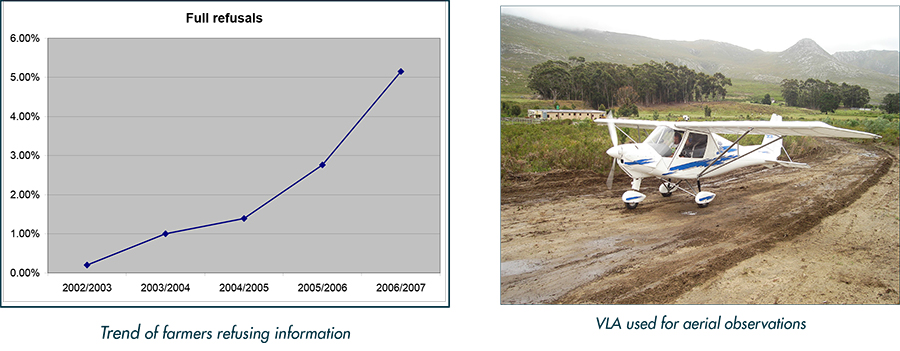Producer Independent
Crop Estimate System (PICES)
Prior to 1996 crop estimates did not play a very important role in determining the price of grain.
The reason for this is that government took responsibility for price fluctuations. All surpluses or
shortfalls were covered by controlling bodies such as the Maize Board.
However, the implementation of the Marketing of Agricultural Products Act (no 47 of 1996)
changed this and placed greater emphasis on the importance of accurate crop production estimates.
As in any free market, supply and demand play a very important role in setting the price for products.
Crop estimates provide the supply side of the market and are used by the SAFEX to determine
the price of grain.
Crop estimations are announced on a monthly basis by the National Department of Agriculture,
Forestry and Fisheries (DAFF) Crop Estimation Committee (CEC). CEC bases their estimate on the
input of various stakeholders, but in 2006 the DAFF accepted the Producer Independent Crop
Estimates System (PICES) as the benchmark for all area estimates in South Africa.
The National Department of Agriculture, Forestry and Fisheries (DAFF) through the Crop Estimates Committee
(CEC) awarded a tender for the development of a statistical based system to determine the total
production of grain in the country on a monthly basis. The tender was awarded in 2002 to the
National Crop Statistics Consortium (NCSC) consisting of the Agricultural Research Council, Geoterraimage
and SiQ.
As part of the NCSC mandate to continuously improve the system, it was necessary to develop a
system that could function independently from the producer. This was due to the fact that producers
became more reluctant to provide accurate information to the CEC and a concerning
trend developed where producers were refusing information.
The South African government has made available satellite imagery on a continuous basis for the
project. This has enabled the NCSC to develop the PICES system of which the steps followed are
summarised below:
- Obtain satellite imagery for the area of interest (national coverage)
- Delineate all potential field crop boundaries within a Geographical Information System
through a process called digitising (13 million hectares completed for SA)
- Generate a point frame for sampling within the field boundaries.
- Determine the sample size and draw the sample using a geographic systematic random sampling
approach (approx 12 000 sample points).
- Overfly each selected point with a Very Light Aircraft (VLA) to determine crop type and other
crop parameters.
- Field data is synchronised to a central statistical database for analysis and calculations.
The producer based surveys (subjective information) were done for the 4 major grain producing
provinces in SA. The PICES is being done for 8 provinces in SA. PICES has proved to be extremely
cost effective when compared to the field based subjective interviews.
An area of 122 million hectares was covered in a 2 month period using 3 aircraft and ground support
teams. We have managed to improve the accuracy by 40% per province and are currently
working on a Coefficient of Variance (CV) of less than 2% at national level.
We are further able to distinguish between dryland and irrigation cultivation and also between all
the various summer as well as winter grain crops. We have also been able to, for the first time in
SA, provide information at commercial farming level as well as small scale farming level.
The success of the PICES has led to it being implemented in various other applications. The
PICES approach has been utilised in a project where the objective was to establish the area in
South Africa under Alien Invader tree species. The PICES has also been transformed to enable an
Agricultural Census approach (as opposed to a sample approach) where Baseline Mapping has
contributed significantly to better decision making at Provincial Level as well as Local Level.
|
